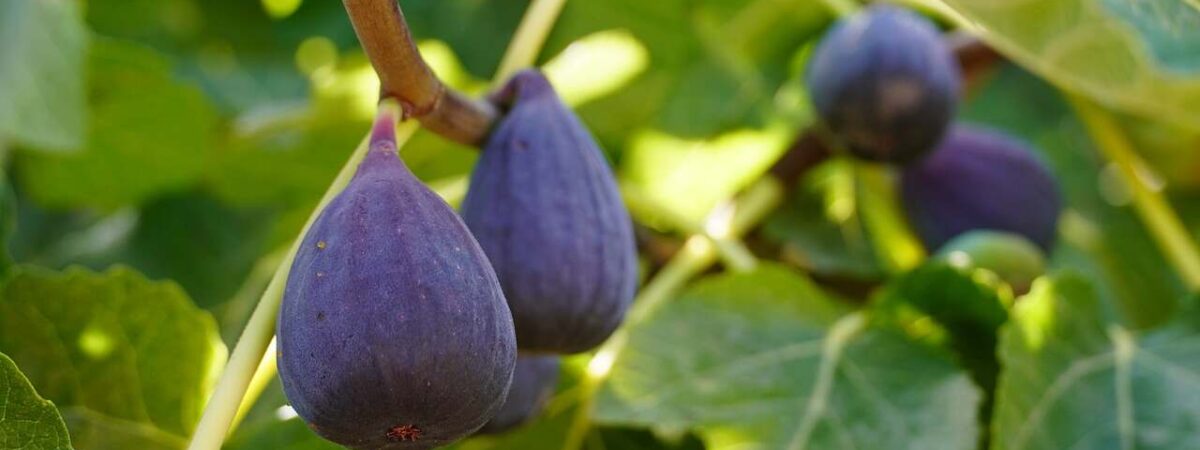Plant Overview
The common fig tree or scientifically named the Icus carica is the most popular species of fig and is a special tree for many home gardeners because its flowers do not require pollination to yield figs.
There are a lot of varieties of the common fig tree that exist in the world, including the hardy cultivars that can be grown outdoors in slightly cooler climates from zones 6 and 7.
Some of the other species of figs are either unable to produce edible fruit or have very specific pollination requirements like needing to be pollinated by a certain type of wasp that make them too much trouble for home gardeners to grow.
Figs are multipurpose fruits that can be eaten fresh from the tree, can be preserved for the future, or used in cooking. Figs generally do not continue ripening once they are picked from the plant, so make sure to harvest at the right time!
Varieties of a fig tree

There are a lot of varieties of fig trees available on the earth. Some of the popular varieties are:
Brown
Brown turkey is one of the popular varieties of figs that turkey produces abundant medium to large figs. This variety works best in warmer climates. However, it is fairly tolerant of cooler temperatures, too. So it can be grown anywhere you want to grow.
Celeste
Celeste is also one of the popular varieties of fig trees that produce small, sweet, purplish figs. This variety is one of the more winter-hardy varieties specifically for the cooler climate.
Hardy Chicago
Hardy Chicago is the winter-hardy fig variety that produces purple, medium-size figs.
King
King is one of the best fig varieties which is well adapted for the cooler conditions found in the northwest. This species produces medium figs that are sweet and rich in flavor.
Kadota
Kadota is a popular fig variety that vigorously produces small to medium fruit. This fig variety is rich and sweet, and it is the most commonly canned fig.
How to grow figs?
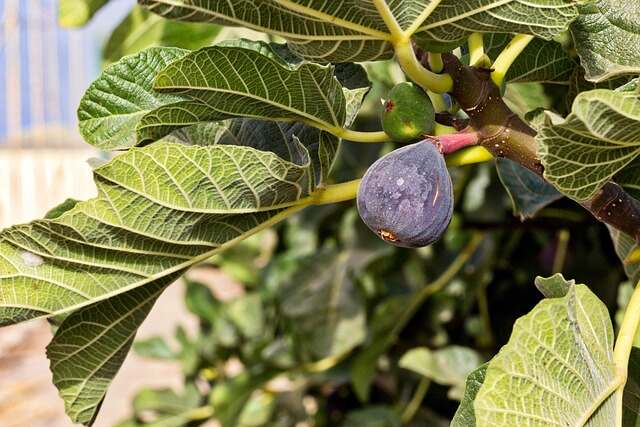
You can grow figs in a warm, sheltered spot in full sun where they can get proper sunlight and warmth. You may plant them in pots or can use rubble or can submerged paving slabs to restrict the root growth of this plant when grown in the ground.
If you are growing figs in pots, keep pot-grown plants well-watered and feed them weekly with tomato food once fruits start emerging. An addition of annual mulch of well-rotted compost or manure will keep your soil fertile while suppressing weeds around the fig tree.
Once the fruits are ready for plucking, hang down and are soft to touch, harvest the fruits specifically in autumn.
The best time to plant a fig tree and grow it is late winter or spring when it can get plenty of time to establish before cold weather sets in. Plant your fig in a deep hole, as it has a long tap root.
It’s believed that figs do their best when their roots are slightly restricted. So If you’re planting your tree in the ground, it is recommended to dig a planting hole, and then part fills it with well-rotted manure and rubble, to restrict the roots.
If you have them, make a wall around the roots using paving slabs to further restrict them. Back-fill it with compost and firm it into place. Alternatively, you also can buy root control bags online. Water your plant well.
Where to grow figs?
Figs do their best when it is planted in a sheltered, sunny spot, ideally against a brick wall where they can soak up the heat from the wall during the night.
How to care for figs?
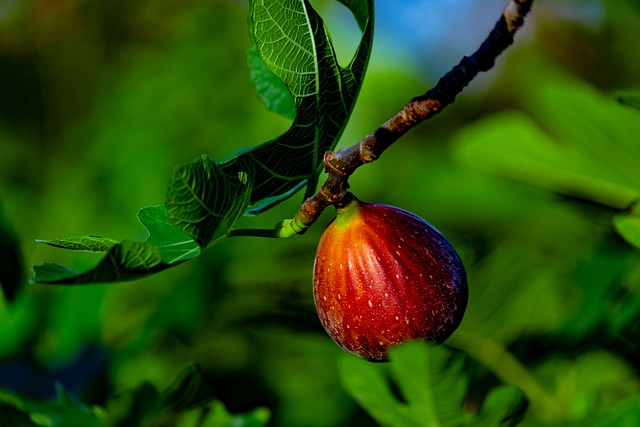
Planting site
Figs are fun and fairly very easy to grow, but there are certain important things you need to learn about fig tree care.
When good drainage is provided to your fig plants, they can grow in a wide range of soil, but they may need a site free of root-knot nematodes to grow.
For good fruit crops and vigorous growth of your fig, plant your tree in full sunlight. The cold injury may be further reduced if your fig does not receive direct sunlight early in the morning or late in the evening during the winter months. However, the site you have chosen to grow figs should receive a minimum of eight hours of sunlight daily during the growing season.
Soil
Fig trees thrive well in well-drained, organically-rich soils, but they also can grow on many other soil types. These plants are also tolerant of heavy clay soils if drainage is good.
In soil that has a low fertility level or compact clay, it’ll be worth your time to mix in some organic compost to the native soil to ensure better growth of the plant.
Fig likes the soil to hold a good supply of water, especially when the fruits are growing in summer, but it does not need so much water that the soil stays constantly soggy or wet.
Figs prefer slightly acidic soil (pH 5.5-6.5) to grow. However, soils of moderate alkalinity are also tolerated. If your soil pH is low than required, adjust the pH with dolomitic limestone.
It is recommended to spread the limestone evenly over the entire area where the figs will be planted, then till the soil. If possible, you can also spread it to at least a 6-foot by 6-foot area where each bush will be planted at least 8 inches deep.
Fertilizer
Fig trees preferably grow in moderately fertile soils with limited fertilizer. But fertilizer is needed for soils with low fertility or where competition from other plants is heavy.
Although nitrogen is usually the only needed plant nutrient for the growth of the plant, other nutrients may be lacking in some areas causing poor growth.
Poor growth of plants or fruit indicates the need for fertilizer. So feed your tree when necessary. You can feed your fig tree with organic plant foods or inorganic fertilizers, such as 10-10-10.
Water
The first year is a crucial time for your new fig. For better yields, figs need regular watering throughout the summer. The amount and the frequency of water depend to a large extent on the soil and type of soil.
As a rule of thumb, you can use 1 to 1½ inches of water per week from rain or when irrigation is adequate. Over timing may also cause problems. Overwater or drought may cause yellowing and dropping of leaves.
Once your fig tree is established, it requires at least one inch of water each week. After the first year, you don’t need to be quite as vigilant as your fig tree will have established its root system. Water your plant regularly, especially during dry spells.
How to harvest figs?
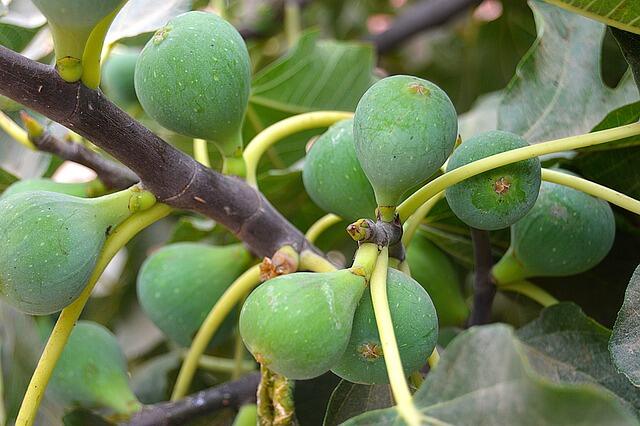
After your figs are fully ripe, you should harvest them as they will not continue to ripen off the tree. After riping, the figs should be fully colored and slightly soft to the touch.
Before harvesting, you also may need to invest in bird netting to protect your plant as figs are a favorite of birds and squirrels.
While picking figs, make sure to wear gloves or long sleeves because the sap of the fig tree may irritate your skin.
Figs are also very perishable. So store figs in the refrigerator for 2 to 3 days. For long-term storage, you can also freeze figs whole for later use. You can also store them by drying them for future use.
How to prune figs?
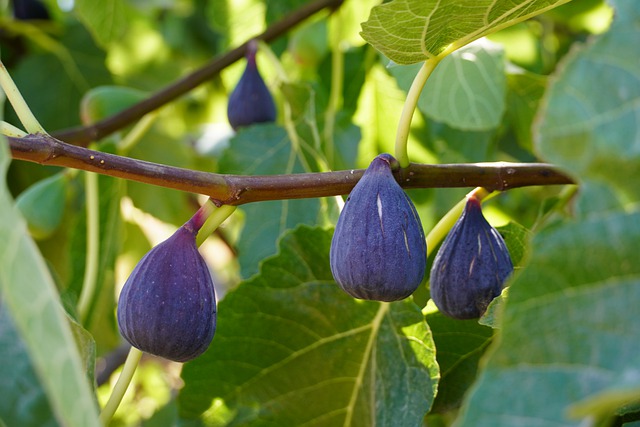
Pruning is often necessary for your plant a for better look and healthy growth of your plant. So you may often need to prune your fig plant.
You can prune container-grown fig trees by removing dead and weak branches in late winter and new shoot tips in summer.
The fig plants are also extremely vigorous, so your plant may require regular annual pruning to keep them in check. If your tree is attaining a larger size for its space, you can prune your plant back hard – but keep in mind that you will lose fruit for a time, however.
It is recommended not to prune fig trees in spring – it can cause your plant to bleed sap, which can weaken and even kill the tree.
Common pests and problems
Figs, like most other fruit trees, are popular among birds and squirrels. So these animals may demolish a crop if they have the opportunity, so it is suggested to use deterrents or cover your tree with a net or fleece to protect it.
Wasps may also be attracted to split fruit or windfalls, so it is recommended to pick fruits as soon as they are ripe and pick up any fallen fruits.
If your tree drops its fruit early, it may be a sign that your plant requires water. So water your plant as much as possible.
In rainy seasons or humid environments, the fig tree may show the symbol of rusting. If your plant is suffering from rusting, it will show up as rust-colored brown discoloration on the leaf, resulting in early leaf fall. This disease can be cured by the addition of 5-5-50 Bordeaux spray (copper sulfate, lime, and water) applied every two to three weeks during the growing season, from April to November.
Conclusion

As you learned this far, you might have got the idea of how to grow and care for a fig tree. Then use the above-mentioned procedure snd grow your fig tree and let us know how it is going.
You may also like to read

